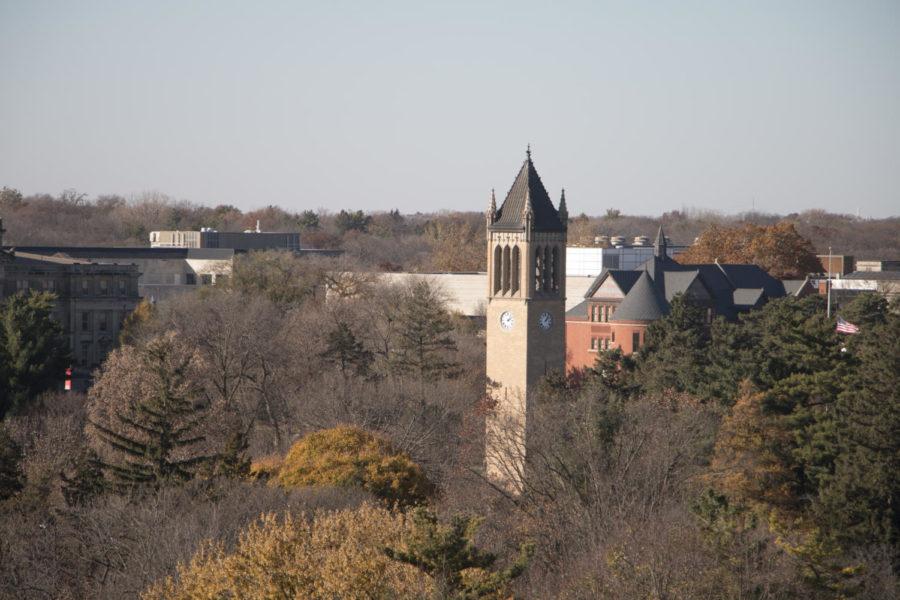Campus climate survey slated for October
The view of the Campanile from Geoffroy Hall. Geoffroy Hall is Iowa State’s newest residence hall and is located on Lincoln Way.
April 7, 2017
The strategic plan Iowa State President Steven Leath unveiled in fall 2016 featured four goals that aimed to engage students and faculty in a conversation on campus climate.
The four goals were to ensure students receive an exceptional education, conduct high-impact research, improve the quality of life for all Iowans and enhance the university climate for the Ames and Iowa State communities. Under one of the four goals, a campus climate survey would be released to understand the community’s issues and needs.
Reginald Stewart, vice president for diversity and inclusion, said the survey is part of a continuous process being completed by the Campus Climate Survey Work Group, a committee charged with developing the survey. Committee members have met several times with Rankin & Associates, a consultant group, and other Ames representatives have met to construct the survey.
Iowa State worked with Rankin & Associates to construct a campus climate survey in 2004. The company has conducted more than 170 campus assessment projects in the last 20 years.
“The survey allows us to get information on a broad scale,” Stewart said. “If something isn’t working, we need to know so we have a better understanding of people’s experience at Iowa State.”
Stewart said it’s important to get an understanding of how things are going within an organization the size of Iowa State, a university that includes more than 36,000 students, faculty and staff.
Though many students did not participate in the survey released in 2004, students benefitted with resources like the campus’ Multicultural Center, which provides printing access and study areas for all students in the Memorial Union.
“It will allow us to find the needs of students to give those needs immediate attention and focus our energy there,” Stewart said.
Kate Gregory, senior vice president of university services, said the survey was created to allow students, faculty and staff to voice their opinions.
“We strongly recommend that everyone takes the survey because it’s important for students to express their issues,” Gregory said.
The committee will continue to meet throughout the summer to finalize the questions for the survey.
“We have several more meetings to attend, but we want to make sure we ask the correct questions so students are able to vocalize their thoughts,” Gregory said.
The anonymous survey is set to be available electronically in October. After the survey is released, it will be available to submit for 30 days and will take about 10 minutes to complete.







